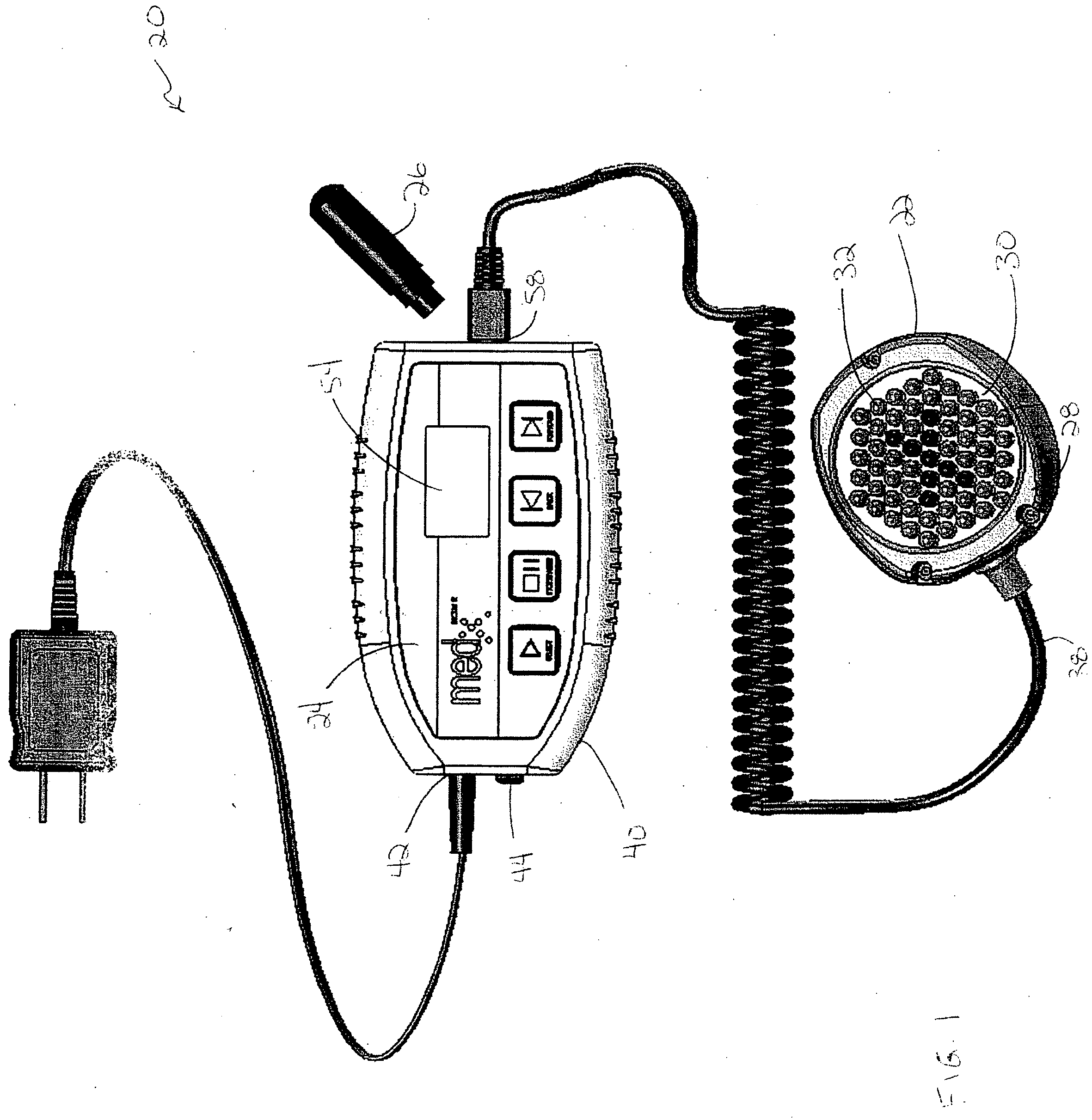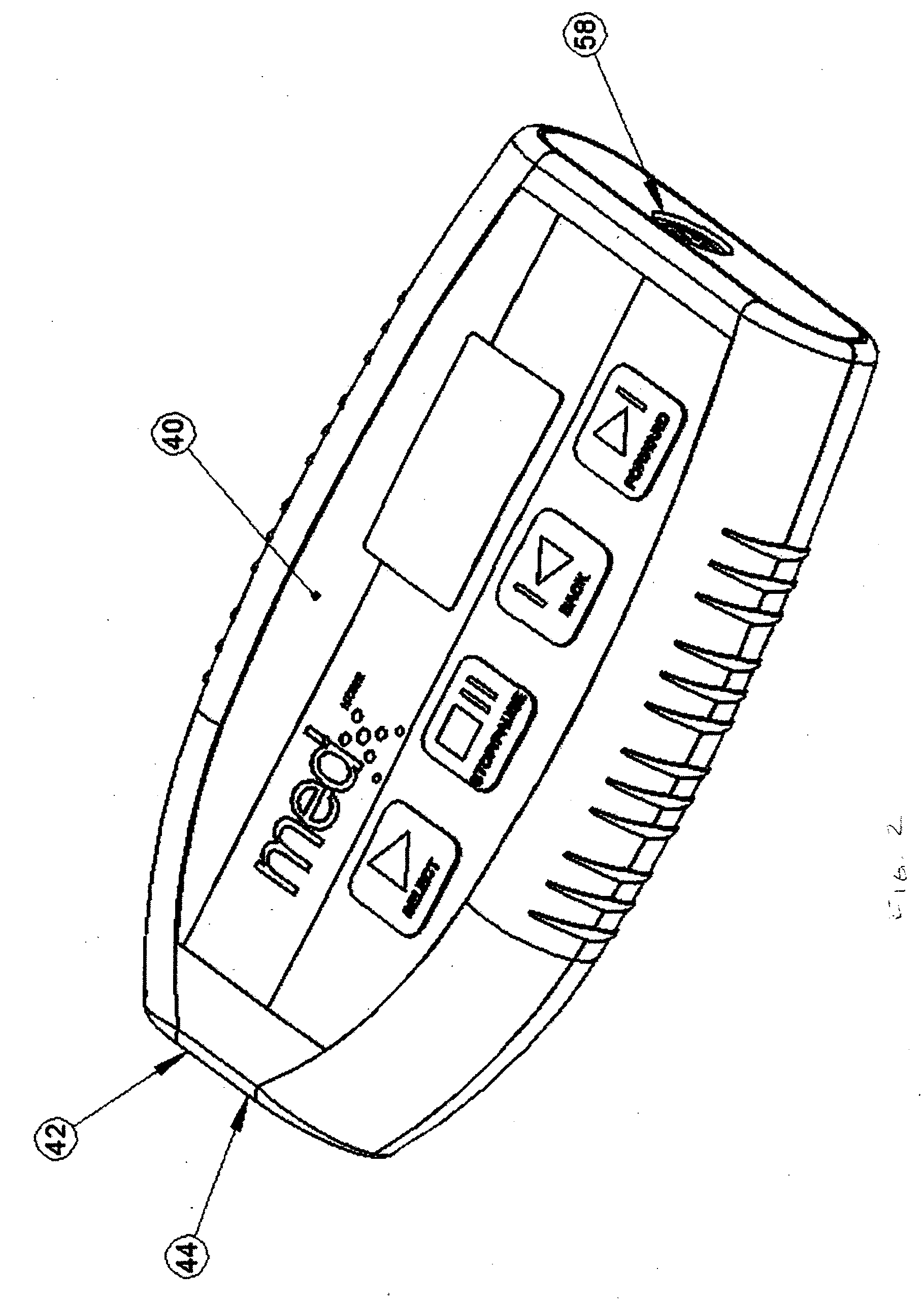Phototherapy device
a technology of phototherapy and device, which is applied in the field of phototherapy, can solve the problems of device disadvantage, device disadvantage, deeper tissue penetration than sld, etc., and achieve the effect of monitoring and diagnosing progress in treatmen
- Summary
- Abstract
- Description
- Claims
- Application Information
AI Technical Summary
Benefits of technology
Problems solved by technology
Method used
Image
Examples
Embodiment Construction
[0020] Referring first to FIG. 1, there is provided a perspective view of a phototherapy device, indicated generally by the numeral 20. The phototherapy device 20 includes a light source 22 for emitting light of a suitable wavelength and a programmable controller 24 connectable to the light source 22 for controlling the power supplied to the light source 22. A programming key 26 is associated with the programmable controller 24 for programming the programmable controller 24 to control the power supplied to the light source 22 during use. The controller 24 is programmable to control the power supplied to the light source 22 only when the programming key 26 is in communication with the controller 24.
[0021] The present invention will now be further described with continued reference to the FIG. 1. The light source 22 includes a protective housing 28 that has a generally circular footprint. All but one face of the protective housing 28 is comprised of an opaque black plastic material. ...
PUM
 Login to View More
Login to View More Abstract
Description
Claims
Application Information
 Login to View More
Login to View More - R&D
- Intellectual Property
- Life Sciences
- Materials
- Tech Scout
- Unparalleled Data Quality
- Higher Quality Content
- 60% Fewer Hallucinations
Browse by: Latest US Patents, China's latest patents, Technical Efficacy Thesaurus, Application Domain, Technology Topic, Popular Technical Reports.
© 2025 PatSnap. All rights reserved.Legal|Privacy policy|Modern Slavery Act Transparency Statement|Sitemap|About US| Contact US: help@patsnap.com



